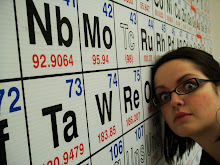Overview:
The Read/Write Web, by Will Richardson, gives a brief history of the evolution of the World Wide Web, starting with Tim Berners-Lee's original 1989 idea of a place for us all to read, write, and share and continuing through the originally slow, always accelerating progression of the web since then from it's largely reading-centered beginning to the massively "writing"-centered state it's in now. Richardson then goes on to describe the extraordinary changes that have already taken place in politics, business, and social networking because of the read/write web, emphasizing the fact that, as usual, education has been a bit slower to adapt to this new technology.
The continuing excerpts from the book highlight effective uses of the internet in modern classrooms, interesting sites like del.icio.us and bloglines, which allow for easier networking, idea-sharing, and publishing of classroom assignments, and an epilogue which relates a typical morning in the life of an exceptionally digitally-connected teacher. Here and here one can find videos of Will discussing a few more aspects of the web revolution. In this two-part talk, I felt Will emphasizing not only what can be done with technology in education, but what should be done and why.
Reference Points:
1. "The past few years have seen the development of a wide variety of easy internet publishing tools that have done much to fulfill Berners Lee's concept of a Read/Write Web."
2. "At the beginning of 2005, Technorati.com. . . listed almost 25 million blogs. . . In other words, the new two-way web has officially arrived."
3. "For most, however, the significance of these changes is just starting to be realized. . . 'the people who'll understand this best are probably just now being born' (Gilmoor 2005)."
4. ". . . there is little doubt that politicians will continue to try to find ways to harness the sense of community that the Read/Write web makes possible."
5. "The thousands of educators now entering the blogosphere will certainly provide us with many more creative examples in the years to come."
Reflection:
The question of how best to integrate technology in education is a tricky one. On the one hand, there is potential for large increases in student contact-time with material. If they could be enticed to spend time reading, writing, and talking about what they're studying during the hours they spend on the internet, that would be a significant educational gain. On the other hand, not everyone will have access to the internet at home. There are an astonishing number of kids in my school who only have access to the internet at school - one more obstacle to be conquered before starting any large-scale internet projects. I am extremely thankful to be interning in a department that regularly makes use of the internet as a source for materials, online homework programs, sharing lesson plans and materials, and maintaining communication with parents. It is unfortunate that IT always seems to fall short in personnel quantity and quality (not just in schools, I hear, but everywhere). This article has made me think about further possibilities for getting the kids more involved with the material through the internet, and not just from what we present in class. I have always been intrigued by the idea of letting kids publish their work somehwere where anyone could see it instead of letting them turn in half-hearted work to me, safe in the knowledge that it's for my eyes only. I am more intrigued now.
Tuesday, October 27, 2009
Subscribe to:
Post Comments (Atom)

No comments:
Post a Comment